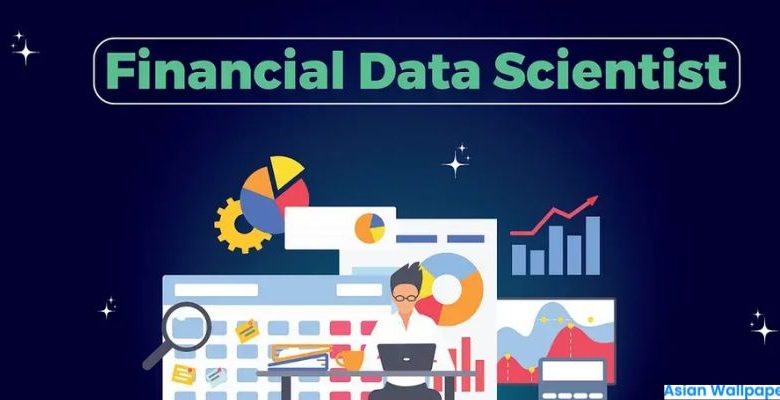Unveiling the Potential of financial data science projects

In the era of digital transformation, the fusion of finance and data science has unlocked a realm of possibilities, reshaping how financial institutions operate, investors make decisions, and markets function. Harnessing the power of algorithms, machine learning, and big data analytics, financial data science projects have emerged as catalysts for innovation, efficiency, and risk mitigation within the financial sector. This article delves into the landscape of financial data science projects, exploring their diverse applications, impact, and future trajectory.
Unveiling the Potential of financial data science projects
Predictive Analytics in Asset Management:

Asset management stands at the forefront of leveraging data science to optimize investment strategies and enhance returns. Predictive analytics algorithms sift through vast datasets encompassing market trends, economic indicators, and company fundamentals to forecast asset prices, identify emerging trends, and mitigate risks. Machine learning models, ranging from regression analysis to deep learning algorithms, empower asset managers to make data-driven decisions, optimize portfolio allocations, and capitalize on market opportunities with precision and agility.
Algorithmic Trading and High-Frequency Trading (HFT):
Algorithmic trading has revolutionized financial markets by automating trade execution based on predefined rules and mathematical models. High-frequency trading (HFT) algorithms, operating at lightning speed, capitalize on fleeting market inefficiencies to execute trades within microseconds, generating profits through arbitrage and market making strategies. Advanced data science techniques, such as natural language processing (NLP) for sentiment analysis and reinforcement learning for adaptive trading strategies, continuously refine algorithmic trading systems, driving liquidity, efficiency, and market liquidity.
Fraud Detection and Risk Management:
Financial institutions confront an ever-evolving landscape of financial crime, ranging from fraud and money laundering to cybersecurity threats. Data science serves as a potent weapon in the arsenal of risk management, enabling the detection of anomalous patterns, suspicious transactions, and fraudulent activities amidst vast volumes of transactional data. Machine learning algorithms, including anomaly detection, clustering, and network analysis, empower financial institutions to preemptively identify and mitigate risks, safeguarding assets and preserving trust in the financial system.
Credit Scoring and Loan Underwriting:
Credit scoring models form the cornerstone of lending decisions, assessing the creditworthiness of borrowers based on their financial history, behavior, and risk profile. Data science methodologies, encompassing traditional statistical techniques and machine learning algorithms, enhance the accuracy and granularity of credit scoring models, enabling lenders to extend credit to underserved populations and mitigate default risks. Alternative data sources, such as social media activity and transactional data, supplement traditional credit data, enriching credit assessment models and fostering financial inclusion.
Personalized Financial Services:
The era of personalized finance is fueled by data-driven insights and tailored customer experiences. Financial institutions leverage data science to analyze customer behavior, preferences, and life events, offering personalized recommendations, products, and services that align with individual needs and aspirations. Recommender systems, powered by collaborative filtering and deep learning algorithms, curate customized investment portfolios, insurance policies, and financial plans, enhancing customer engagement, loyalty, and satisfaction in an increasingly competitive landscape.
Regulatory Compliance and Reporting:

Regulatory compliance poses a formidable challenge for financial institutions, necessitating the timely and accurate reporting of financial transactions, risks, and exposures to regulatory authorities. Data science solutions automate regulatory compliance processes, streamlining data aggregation, validation, and reporting across diverse systems and jurisdictions. Natural language processing (NLP) algorithms extract key information from regulatory documents and financial reports, facilitating compliance with complex regulatory frameworks such as Basel III, MiFID II, and GDPR, while mitigating compliance risks and regulatory penalties.
Market Sentiment Analysis and Trading Signals:
Market sentiment exerts a profound influence on asset prices, driving market dynamics and investor behavior. Data science techniques, including sentiment analysis, social media mining, and news analytics, distill market sentiment from unstructured textual data, social media feeds, and news articles, generating actionable trading signals and insights. Sentiment-based trading strategies, ranging from event-driven trading to trend following, capitalize on market sentiment anomalies, providing traders and investors with a competitive edge in volatile and information-rich environments.
Automated Trading Strategies and Portfolio Optimization:
Automated trading strategies and portfolio optimization algorithms revolutionize how investors manage their assets and execute trades in today’s fast-paced financial markets. Data science methodologies, including machine learning, optimization algorithms, and evolutionary computation, empower investors to design and implement sophisticated trading strategies that adapt to changing market conditions and maximize risk-adjusted returns. By leveraging historical market data, real-time market signals, and advanced analytics, automated trading systems execute trades with precision and efficiency, optimizing portfolio allocations, minimizing transaction costs, and enhancing overall investment performance.
Customer Segmentation and Targeted Marketing:

In an era of heightened competition and evolving customer preferences, financial institutions rely on data science to segment customers effectively and tailor marketing initiatives to specific demographic segments, behaviors, and preferences. Customer segmentation algorithms, such as clustering and classification models, analyze customer data across multiple dimensions, including demographics, transaction history, and product usage patterns, to identify distinct customer segments and personas. By leveraging predictive analytics and recommendation engines, financial institutions deliver targeted marketing campaigns, personalized product offerings, and tailored financial solutions, enhancing customer acquisition, retention, and lifetime value.
Conclusion:
Financial data science projects represent a paradigm shift in the way financial institutions harness data to drive innovation, efficiency, and risk management. From predictive analytics in asset management to fraud detection and personalized financial services, data science permeates every facet of the financial ecosystem, reshaping industry norms, and empowering stakeholders with actionable insights and decision support tools. As the pace of technological innovation accelerates and data proliferates, the convergence of finance and data science heralds a new era of opportunity and transformation in the global financial landscape.
Conclusion: So above is the Unveiling the Potential of financial data science projects article. Hopefully with this article you can help you in life, always follow and read our good articles on the website: Asian Wallpaper



